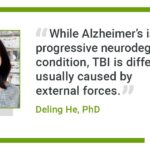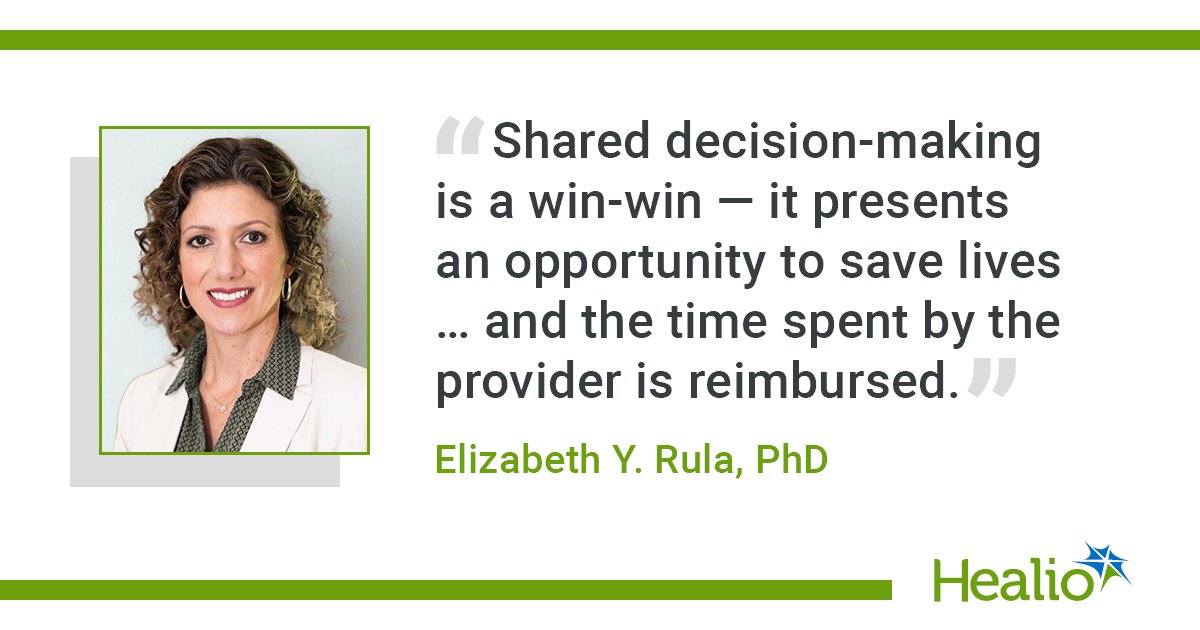August 01, 2025
3 min read
Key takeaways:
- Most Medicare beneficiaries did not have a shared decision-making (SDM) visit before their first lung cancer screening.
- With SDM, better screening adherence was found through 4 years after initial screening.
Medicare fee-for-service beneficiaries had better annual lung cancer screening adherence rates if they underwent a shared decision-making visit before their first screening, according to results published in CHEST.
Notably, a shared decision-making (SDM) visit is required prior to a patient’s first lung cancer screening (LCS) per Medicare, according to the study.

“It is important for clinicians to know that their SDM conversations with eligible patients who are current or former smokers can have an important and lasting impact on screening,” Elizabeth Y. Rula, PhD, executive director at the Harvey L. Neiman Health Policy Institute, told Healio. “Ultimately, improved screening rates will save more lives through early detection of lung cancer.
“We hope that these findings will encourage more clinicians to prioritize SDM with their LCS eligible patients,” Rula continued. “These conversations are reimbursed, which can bolster the practice economically, and help save more lives from the nation’s leading cancer killer.”
In a retrospective cohort study, Rula and colleagues evaluated 22,670 Medicare fee-for-service beneficiaries with a first LCS between 2016 and 2019 to determine how an SDM visit within 90 days prior to the first LCS impacts annual screening adherence.
This population included 2,573 patients (11.4%; mean age, 67.98 years; 50.87% women; 90.09% white) who had an SDM visit and 20,097 patients (88.7%; mean age, 68.15 years; 50.4% women; 89.41% white) who did not.
“Given that a shared decision-making visit is required by Medicare for initial lung cancer screening (low-dose CT scan), it was unexpected that only 11% of patients had a documented SDM visit in the claims data,” Rula told Healio. “This visit rate did not increase over our study period.
“Clinicians may skip documenting codes that are unnecessary, particularly if they are not reimbursed,” Rula said. “However, there is a dedicated procedure code for the shared decision-making, and it is reimbursed.”
Between those with and those without an SDM visit, the study highlighted that four demographic characteristics significantly differed: census division distribution, proportion of patients with a wellness visit in year before first screening (29.23% vs. 26.04%), median household income ($60,236 vs. $60,461) and current smoking status (61.6% vs. 59.42%).
Before adjusting for several variables (temporal changes in low-dose CT uptake, patient factors, clinician factors and practice factors), researchers found that patients with vs. without an SDM visit had significantly better adherence rates at 1 year (+31.9%), 2 years (+24.8%), 3 years (+29.2%) and 4 years (+35.1%) following initial LCS.
“The sizeable effect observed for SDM visits and higher subsequent LCS adherence was sustained over 4 years of follow-up,” Rula told Healio. “It was noteworthy that adherence was more than a quarter higher in all subsequent years — there was no diminished effect with time.”
The study reported that this pattern continued after adjustment, as patients who had vs. did not have an SDM visit had greater adherence rates for each year: 26.5% higher at 1 year, 21.1% higher at 2 years, 24.4% higher at 3 years and 32.5% higher at 4 years.
“The study results indicate the need to educate primary care providers about the value of these conversations,” Rula said. “Shared decision-making is a win-win — it presents an opportunity to save lives by increasing lung cancer screening adherence, and the time spent by the provider is reimbursed.”
Looking ahead, Rula told Healio a prospective study is warranted to confirm their findings.
“While we made every effort to make this an apples-to-apples comparison using the matching approach and statistical controls, a prospective study in which patients are assigned to a treatment and control group would be a sure way to confirm that SDM was the cause of the higher adherence,” Rula said.
Future studies should also include those outside of the Medicare fee-for-service population, Rula told Healio.
“It would be meaningful to investigate whether our findings are generalizable to other insured populations, such as Medicare advantage, commercially insured and Medicaid,” Rula said.
In addition to further research on this topic, Rula noted that research is needed on other ways to improve LCS.
“There is also a need to better understand the range of factors that influence whether an eligible patient is screened,” Rula told Healio. “Although improving, reported lung cancer screening rates are low. While our study shows that increasing shared decision-making is a viable approach to improving those rates, there is still much to learn about how to improve success of lung cancer screening programs.”
Reference:
For more information:
Elizabeth Y. Rula, PhD, can be reached at erula@neimanhpi.org.











